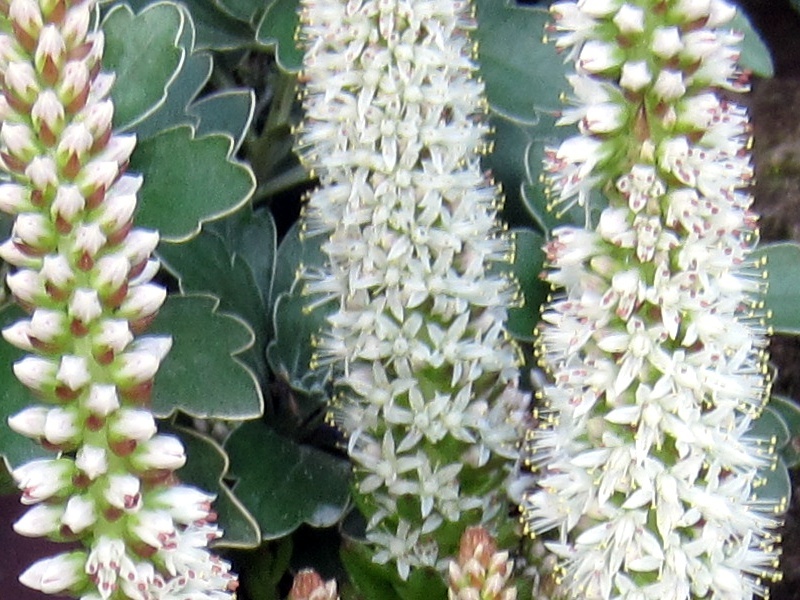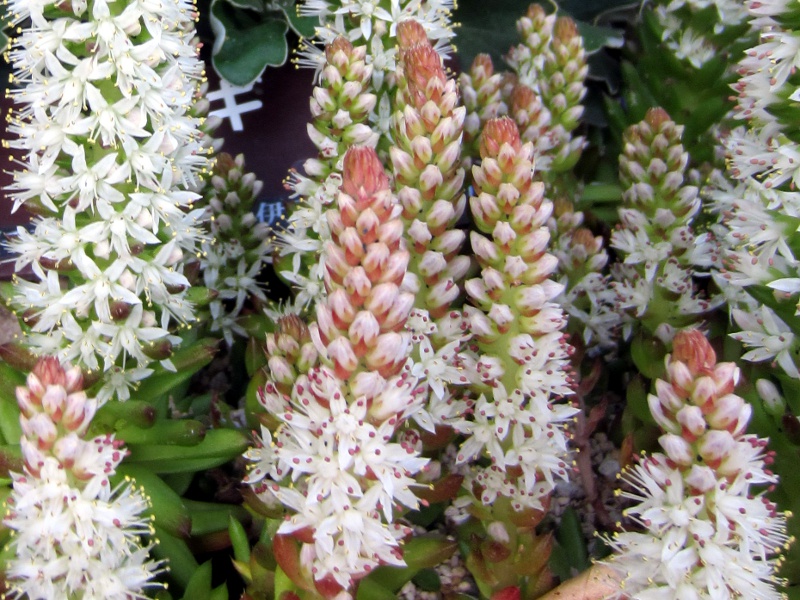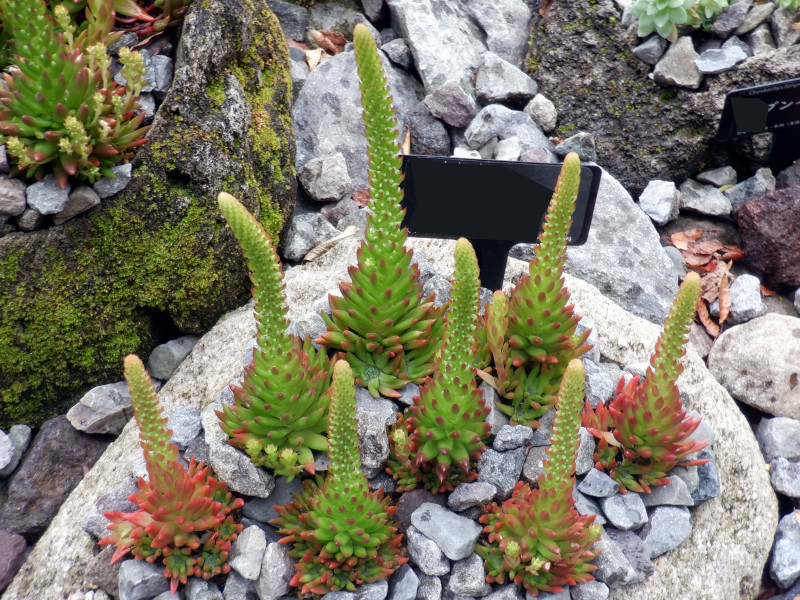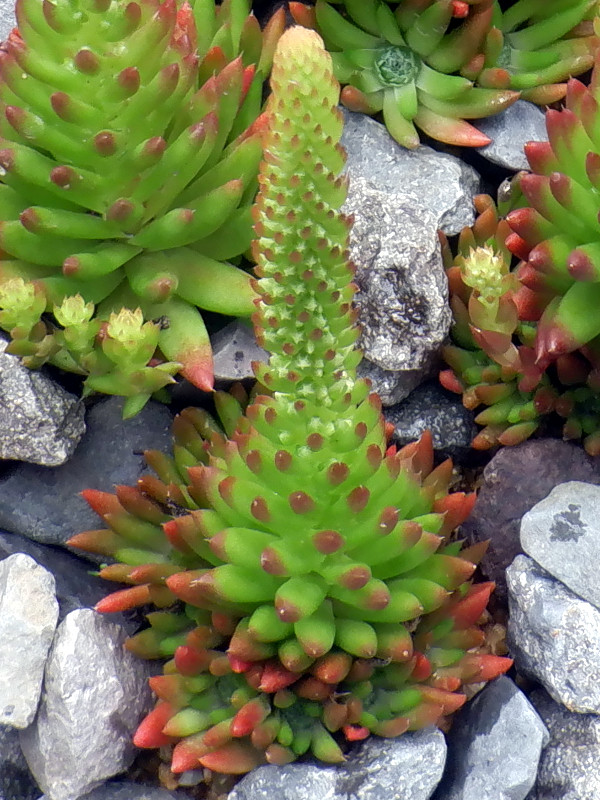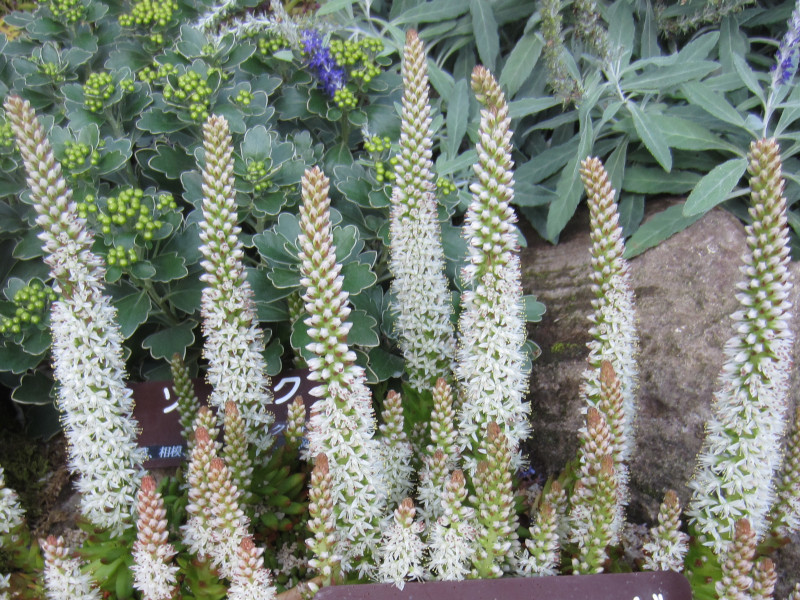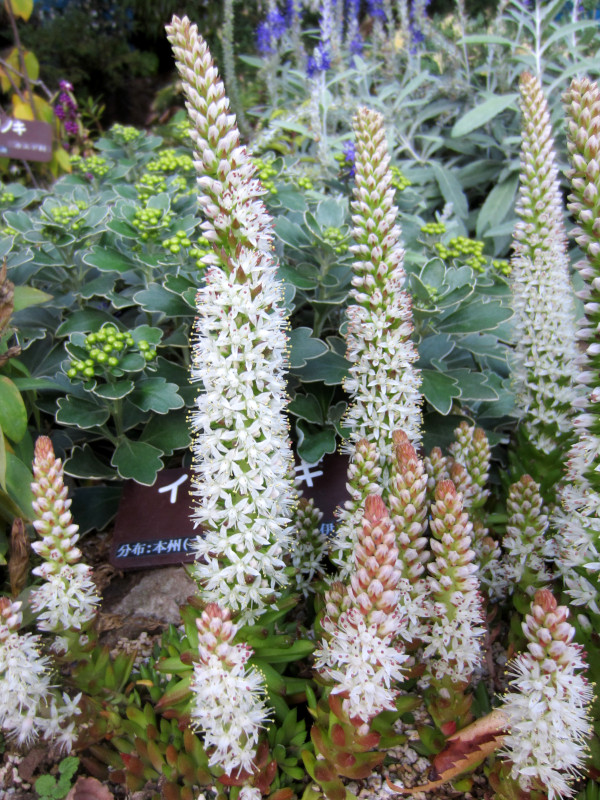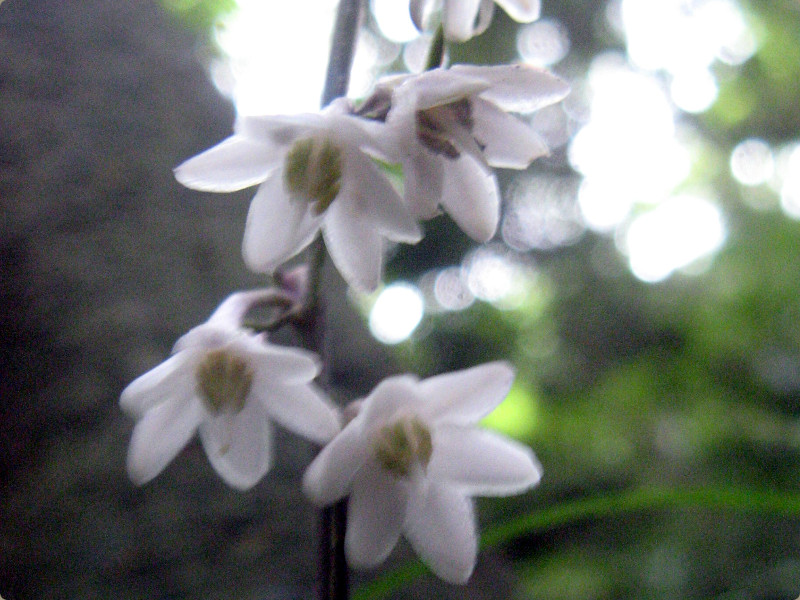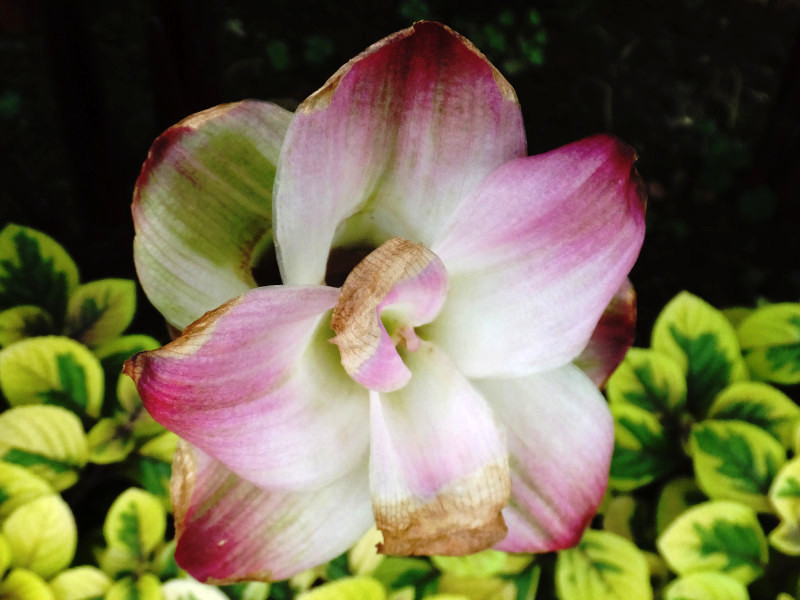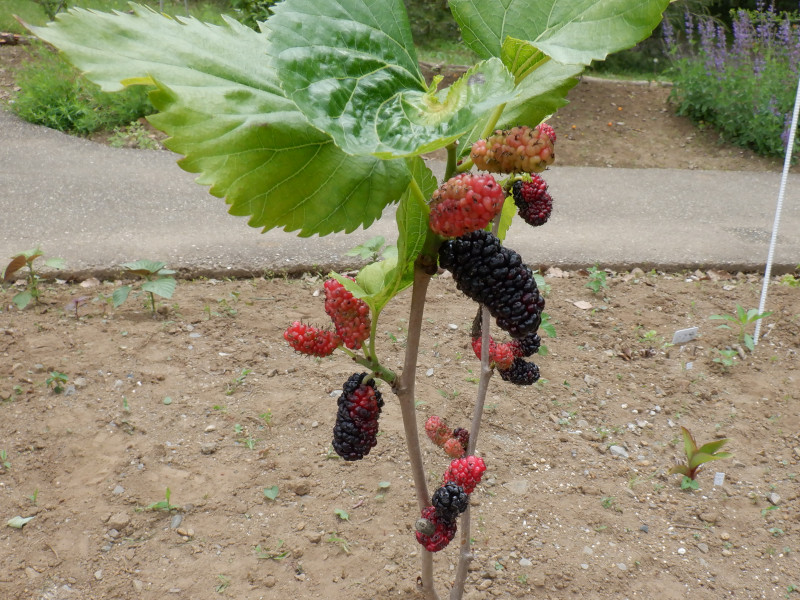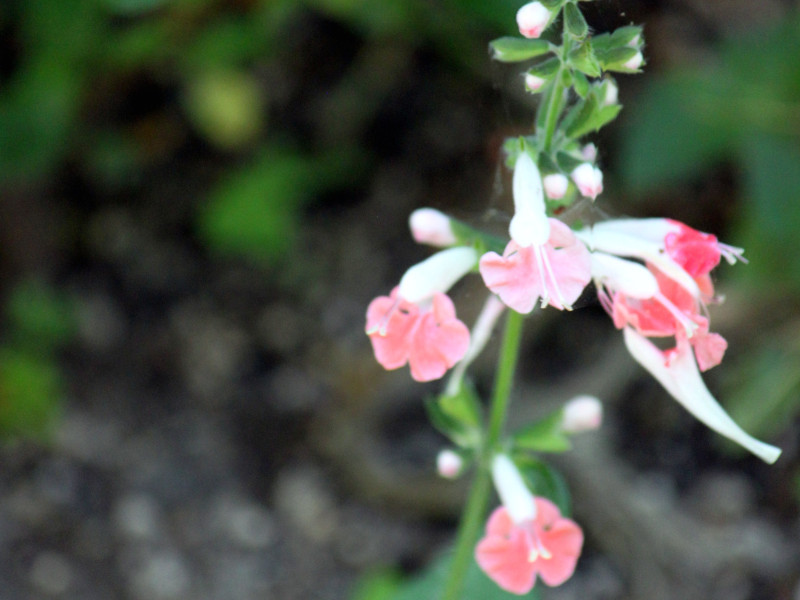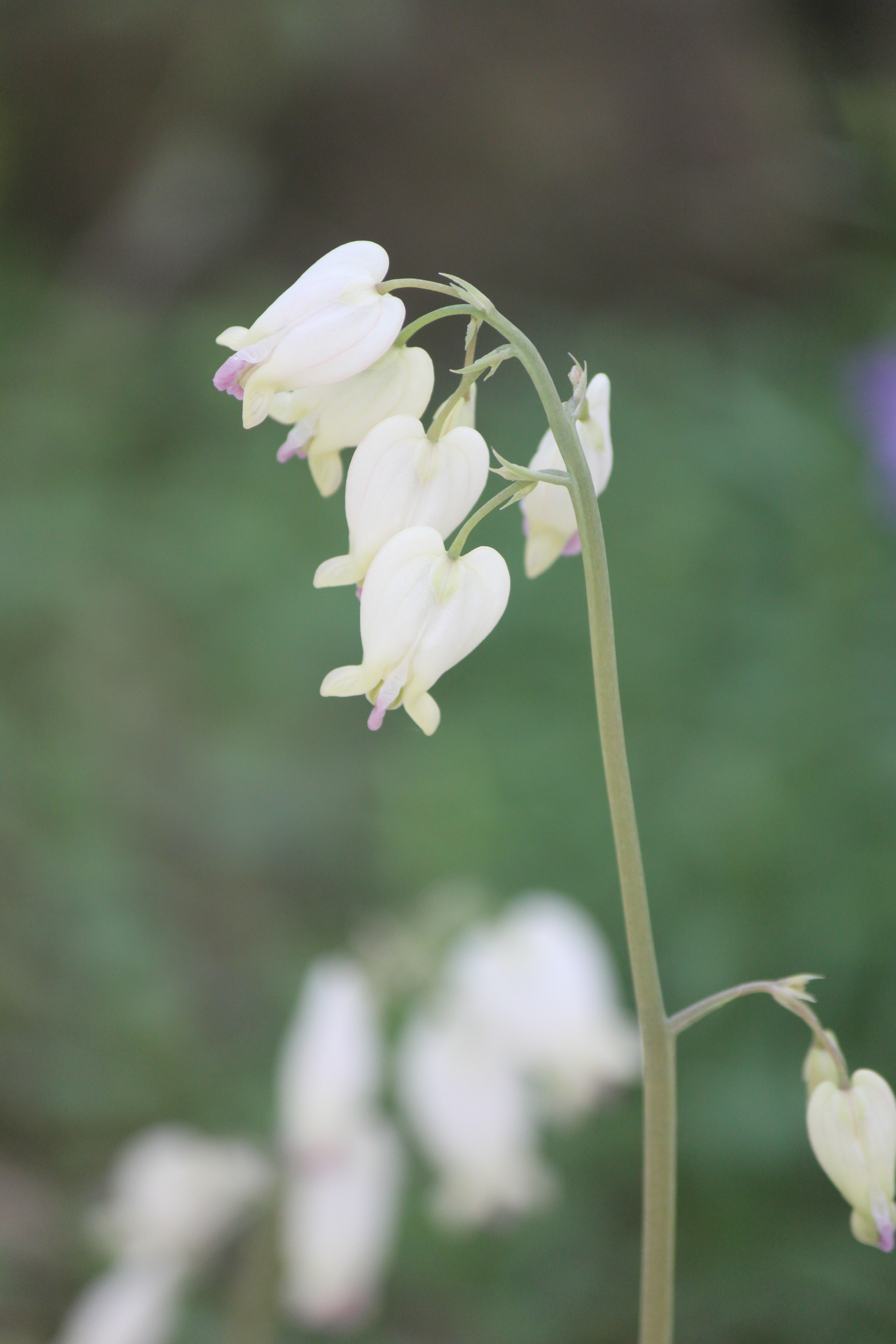Orostachys japonica
- Flower nameOrostachys japonica
- Scientific nameOrostachys japonica
- AliasOrostachys japonica, 瓦松, 爪蓮華, ヒロハツメレンゲ, 晚红瓦松, 広葉爪蓮華
- Place of originJapan, Korea and China
- Place of floweringGarden, Potted flower
- Flowering seasonOctober, November
What is Orostachys japonica
With rounded leaves featuring a short, spiny tip,
Orostachys japonica or the Tsumerenge (Japanese Orpine, Orostachys japonica) is an evergreen, perennial succulent native to Japan, the Korean Peninsula, and China. It belongs to the family Crassulaceae and the genus Orostachys. Known by the alternate names "Kawaragusa" and "Hiroha-tsumerenge" in Japan, its Chinese names are 瓦松 and 晚红瓦松.
In Japan, Tsumerenge naturally inhabits rocky, dry areas from Kanto to Shikoku and Kyushu, with a height of 5–15 cm. Its leaves are thick, lanceolate, and grow from the base. In its second year, a tall flower stalk appears from the center of the basal leaves, forming a long, cylindrical spike covered in dense, small, five-petaled white flowers from October to November. These petals are fused at the base.
As a monocarpic plant, Orostachys flowers only once in its lifetime, after which the parent plant dies. If left unattended, any offsets will also die, so the underground stems need to be cut to secure the offsets for propagation. Commonly used for pot plants or rock gardens, the flower spikes are also used in traditional Chinese medicine under the name 瓦松. The Japanese Orpine is sometimes attacked by caterpillars of the butterfly Tongeia fischeri, which lay eggs on the leaves, causing damage to the plant.
Differences Among Orostachys Species
Compared to the Tsumerenge (Orostachys japonica), which has thick leaves and red anthers, the leaves of the Iwarenge (Orostachys malacophylla var. iwarenge) are flat, and its anthers are yellow. There is also the Aono Iwarenge, which has flat leaves.
Origin of the Name
The Japanese name "Tsumerenge" means "claw lotus," as the thick, lance-shaped basal leaves resemble an animal’s claw and overlap like the lotus seat of a Buddha statue.
Flower Meaning
The flower meanings for Tsumerenge are “happiness” and “sincerity.”
General Name: Orostachys japonica or Tsumerenge
Scientific Name: Orostachys japonica
Other Names: Kawaragusa, Hiroha-tsumerenge, Chinese Names: 瓦松, 晚红瓦松
Classification: Plant Kingdom, Angiosperms, Eudicots, Saxifragales Order, Crassulaceae Family, Orostachys Genus
Height: 5–15 cm
Leaf Type: Basal and stem leaves
Leaf Length: 3–6 cm, Width: 1–1.5 cm
Shape: Lance-shaped with pointed tips and needle-like projections
Leaf Color: Green turning red in autumn
Flowering Period: October–November
Flower Stalk Length: 10–30 cm
Flower Type: Panicle, Color: White, Diameter: 0.7 cm, Petals: 5
Stamens: 10, Pistils: 5, Anther Color: Red
Monocarpic Plant: Blooms only once in its lifetime
Uses: Ornamental, potted plant, rock garden; flower spikes are used in traditional Chinese medicine as “瓦松.”
Insect Host: Black swallowtail butterfly (Tongeia fischeri), which feeds on Crassulaceae plants.
Related Pages:
Tsumerenge (Orostachys japonica)
Special Feature: White Flowers in October
